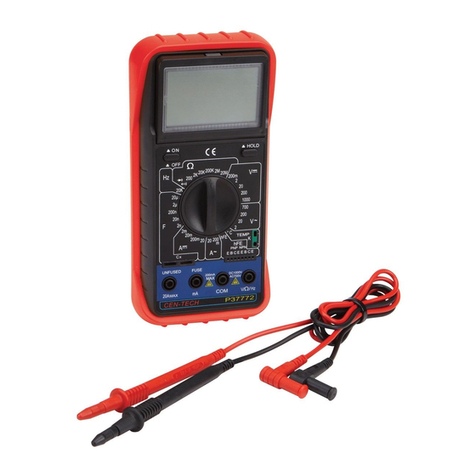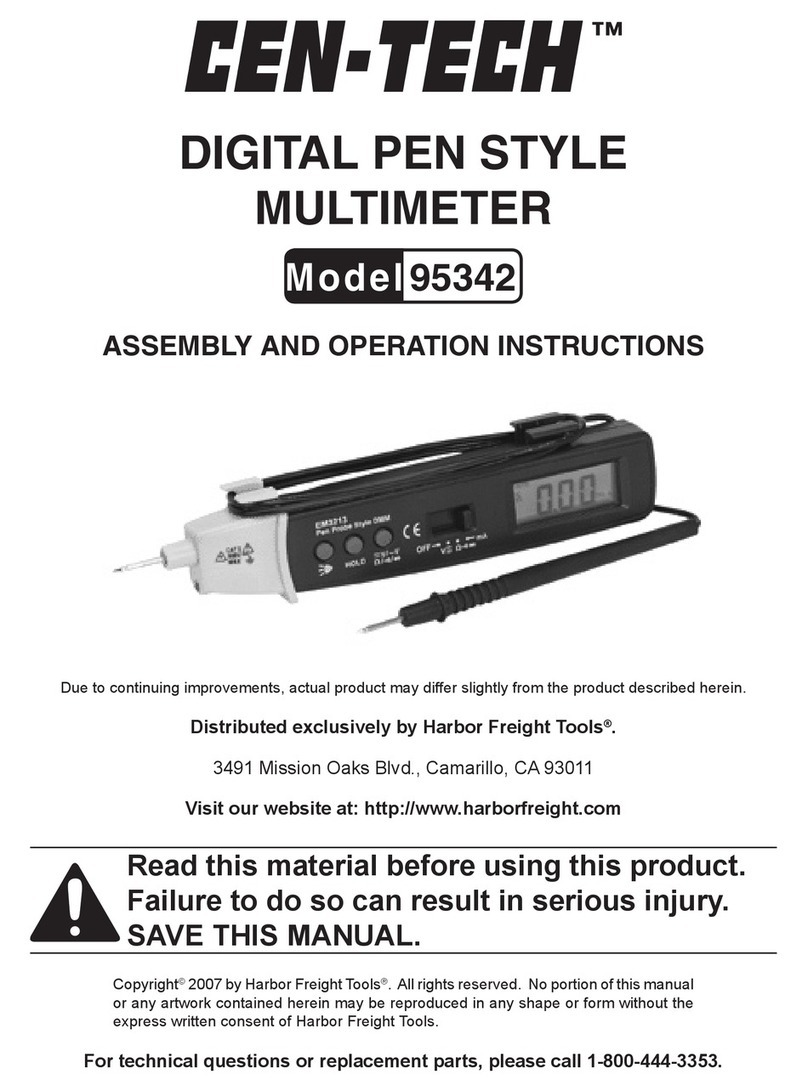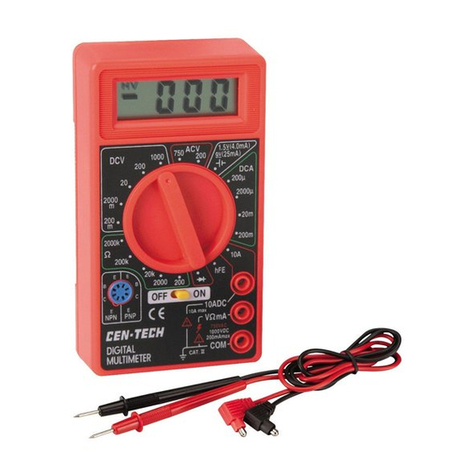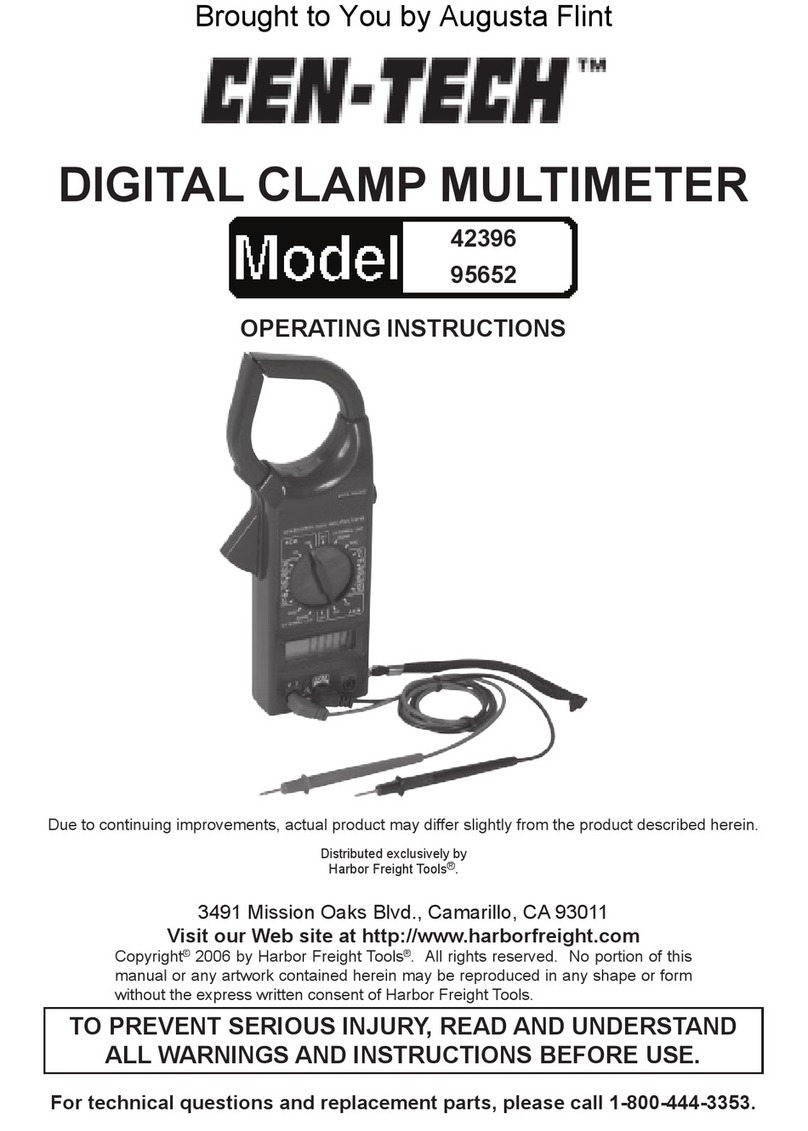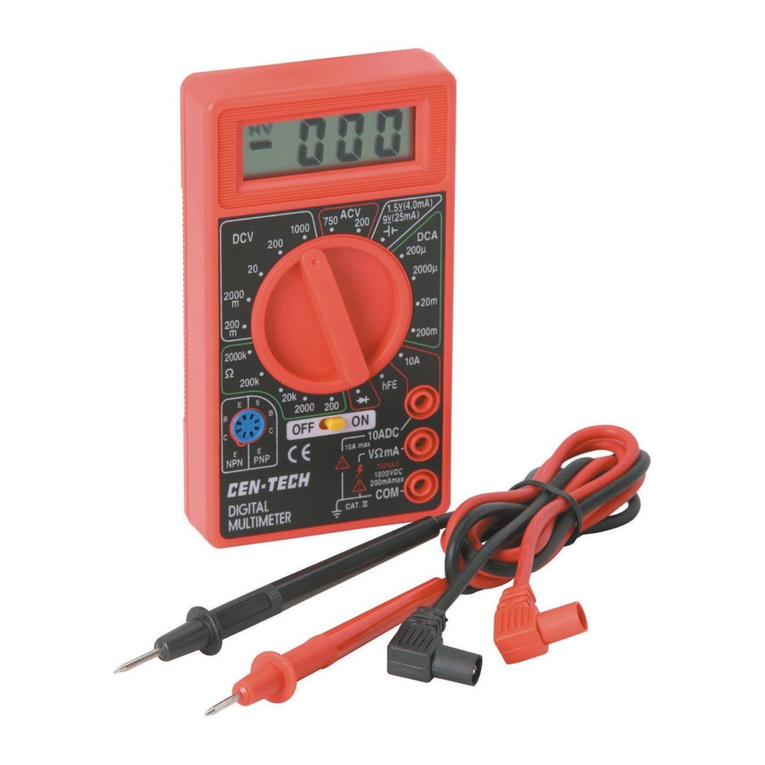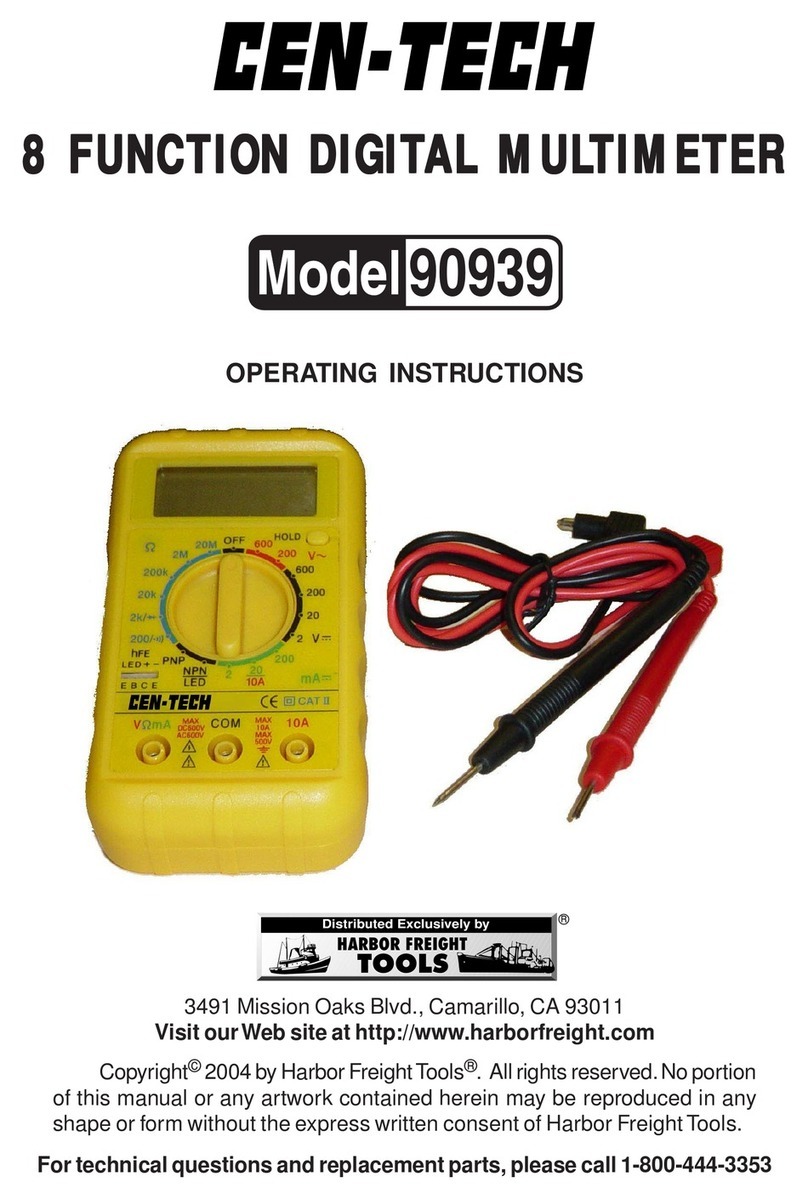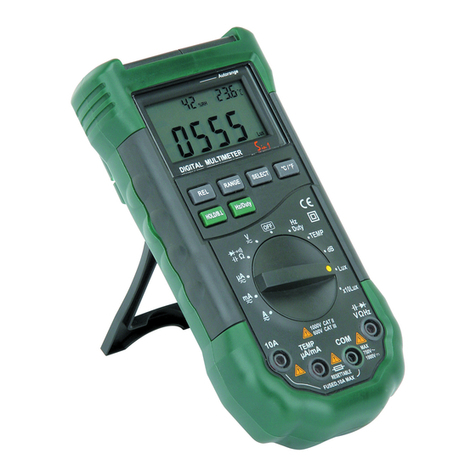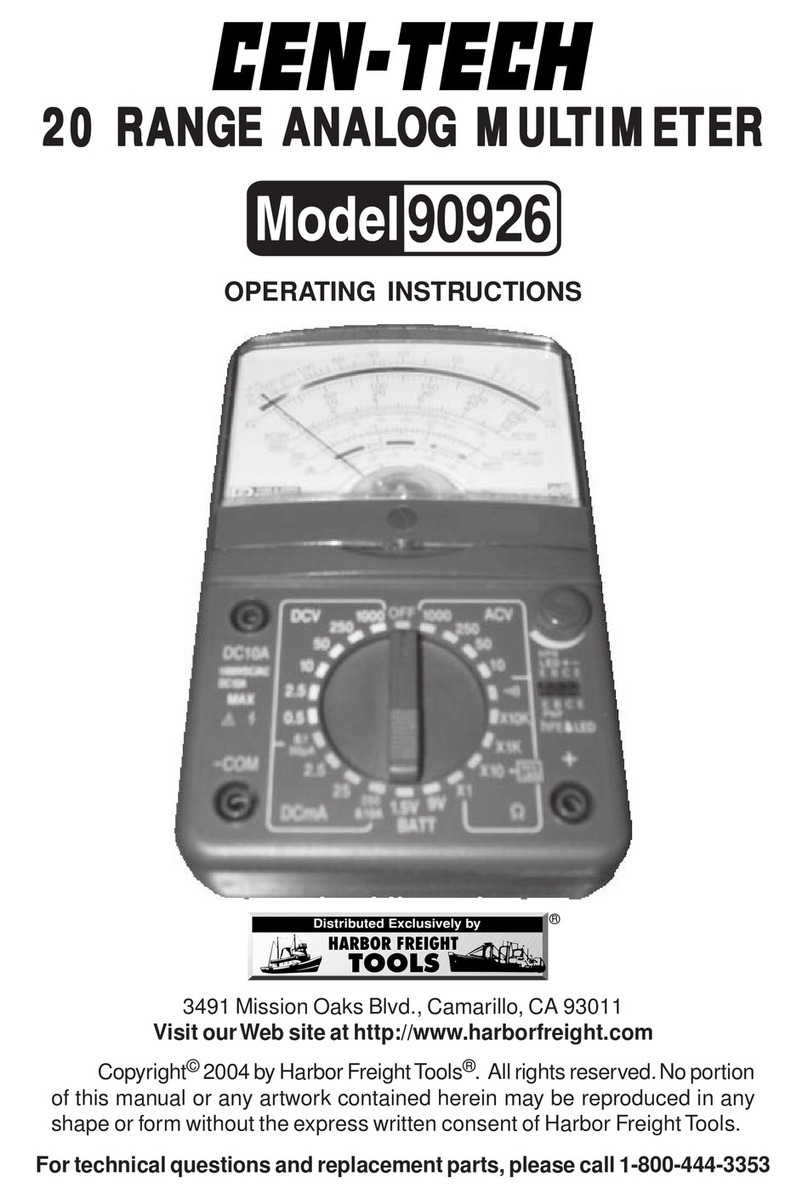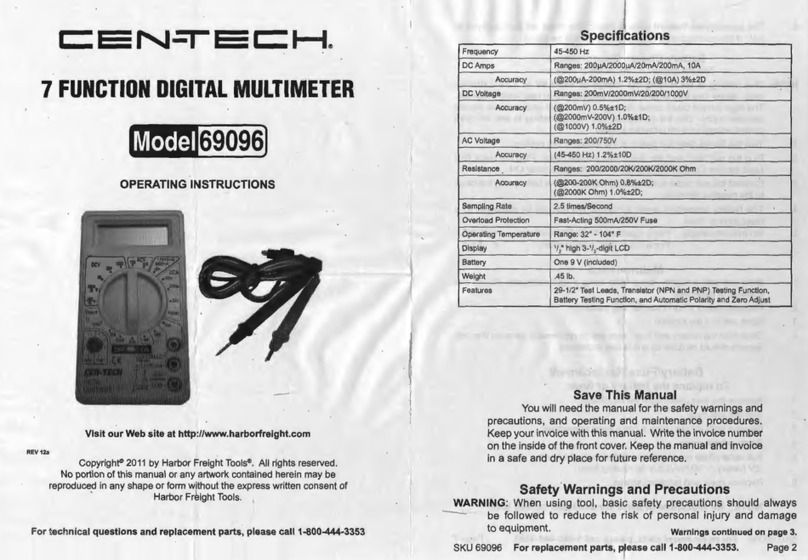SKU32418 Page4For technical questions, please call 1-800-444-3353.
13. Check for damaged parts. Before using any tool, any part that appears dam-
aged should be carefully checked to determine that it will operate properly and
performits intendedfunction.Checkforalignmentand bindingof movingparts;
any broken parts or mounting fixtures; and any other condition that may affect
proper operation. In addition to a general inspection, look specifically for:
a. Pay special attention to the insulation protecting the connectors.
b. Check the leads for exposed metal,damaged insulation,and continuity.
Replace damaged test leads immediately, before use.
Any part thatis damagedshould beproperly repairedor replacedbya qualified
technician.Do not use the tool if any switch does not operate properly.
14. Remove the test leads before performing maintenance, opening the case,
or the battery compartment.
15. Do not use the multimeter if:
a. The test leads are damaged in any way.
b. The battery is low.
c. Near any explosive gasses or fumes.
d. Any abnormal operation is detected.
(If in doubt about the condition of the meter, have it serviced.)
e. The battery cover is open.
16. This meter should be powered only by two, correctly installed 1.5V“AA”
typebatteries.
17. Accessories. Only use accessories intended for use with this tool. Approved
accessories areavailablefrom HarborFreightTools.
18. Donot operate tool ifundertheinfluence of alcohol ordrugs. Readwarning
labels on prescriptions to determine if your judgment or reflexes are impaired
while taking drugs. If there is any doubt, do not operate the tool.
19. People with pacemakers should consult their physician(s) before using
this product. Electromagnetic fields in close proximity to a heart pacemaker
could cause interference to or failure of the pacemaker.
In addition, caution is necessary when near the coil, spark plug cables, or
distributor of a running engine. The engine should always be off if adjust-
ments are to be made to the distributor.
20. Do not test voltage on circuits higher than 1,000 volts. Do not test current
on DC circuits higher than .5 amps or on AC circuits at all.
Warning:Thewarnings,cautions,andinstructionsdiscussedinthisinstructionmanual
cannot cover all possible conditions and situations that may occur. It must be
understood by the operator that common sense and caution are factors which
cannot be built into this product, but must be supplied by the operator.
